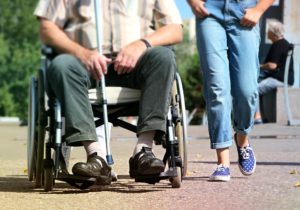The Importance of Accessibility Training
There is growing awareness in the tourism sector that the elimination of architectural barriers is one of the first steps to ensure the inclusion of persons with disabilities in society.
However, another just as essential need is the training of management and customer service staff on quality of service and on how to welcome guests with disabilities and specific access requirements.
Providing high-quality tourism services (accommodation, restaurant and catering services, sports related activities, services of tour operators, tourist information, transportation, among others) for people with specific access requirements requires tourism and hospitality professionals to have professional skills over and above the basic professional training skills.
With appropriate training, customer service staff can make persons with disabilities and elderly persons feel welcome, and, in some cases, even overcome some of the physical and sensory barriers still existing, for example, in older buildings.
Accessible tourism training can help change the attitude barriers that people with disabilities constantly come up against in tourism sector staff. This type of barriers are mainly due to lack of knowledge and, consequently, lack of understanding.
Accessibility training gives staff the knowledge, competence and skills to address the customers’ different circumstances and needs, so they are just part of the characteristics that any other type of customers might have.
In this way, management and customer service staff will be able to handle more confidently situations that are currently perceived as a major challenge.
There are currently no common standards on the content and scope of training in accessible tourism. However, certain initiatives can be highlighted given their innovative teaching method and attractive presentation of contents adapted to the tourism sector.
The use of new technologies is a fundamental tool to increase the scope of training without neglecting the fact that classroom-based courses provide participants with equally enriching and fundamental practical experiences.
from: The Manual on Accessible Tourism for All



